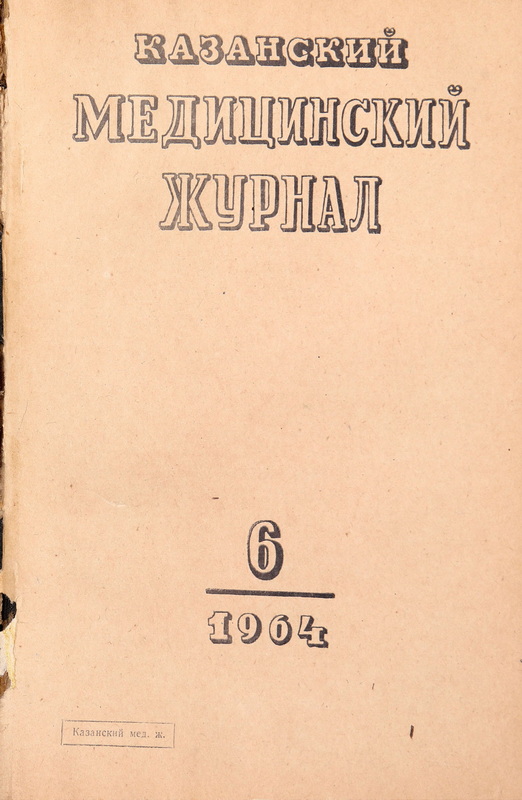Pelger's family leukocyte anomaly
- Authors: Khalitova R.R.1
-
Affiliations:
- Department of Children's Diseases of the Kazan Order Of the Red Banner of Labor Medical Institute on the basis of the 2nd children's clinical hospital
- Issue: Vol 45, No 6 (1964)
- Pages: 71
- Section: Articles
- Submitted: 31.12.2020
- Accepted: 31.12.2020
- Published: 16.11.1964
- URL: https://kazanmedjournal.ru/kazanmedj/article/view/57215
- DOI: https://doi.org/10.17816/kazmj57215
- ID: 57215
Cite item
Full Text
Abstract
Of the hereditary abnormalities of leukocytes, the most common is the Pelger form. It is inherited according to a dominant trait and is characterized by the fact that mature neutrophils, and sometimes eosinophils, have a thickened nucleus, often similar in shape to the nuclei of younger cells - metamyelocyte or even myelocyte. But these cells cannot be attributed to methomyelocytes and myelocytes in terms of their structural features - their nuclei are quite mature. The process of condensation of nuclear chromatin in them is over. In this case, segmented neutrophils have only two segments, with three or more segments they are almost never encountered. In other words, with the Pelgerian anomaly, the shape of the nucleus lags behind its structural development - the structure is old, and its shape is young. With poor staining and inexperience of laboratory technicians, these cells are often mistaken for young ones, and the patient is diagnosed with chronic leukemia or left shift.
Keywords
Full Text
Из наследственных аномалий лейкоцитов наиболее распространенной является пельгеровская форма. Она наследуется по доминантному признаку и характеризуется тем, что зрелые нейтрофилы, а иногда и эозинофилы имеют утолщенное ядро, похожее нередко по форме на ядра более молодых клеток — метамиелоцита или даже миелоцита. Но отнести эти клетки к метомиелоцитам и миелоцитам по своим структурным особенностям нельзя — их ядра являются вполне зрелыми. Процесс конденсации ядерного хроматина в них закончен. При этом сегментоядерные нейтрофилы имеют только два сегмента, с тремя и более сегментами они почти не встречаются. Иначе говоря, при пельгеровской аномалии форма ядра отстает от его структурного развития — структура стара, а форма его юная. При плохой окраске и неопытности лаборантов эти клетки часто принимаются за молодые, и больному ставят диагноз хронического лейкоза или левого сдвига.
За последние 3 года мы наблюдали 5 детей с пельгеровской аномалией лейкоцитов. Возраст детей был от 2 месяцев до 7 лет. Пельгеровские лейкоциты найдены также у трех матерей. У одного ребенка семейность не установлена, и у одного родители не обследованы.
Приводим одно из наших наблюдений. Д., 7 лет, поступил 10. Х-60 г. с диагнозом: ревматизм, первая атака, активная фаза, миокардит. 12.Х-60 г. Л.— 14 400. Нейтрофилы с круглым ядром (первоначально нами были приняты за миелоциты)-9%, ю.—18%, п.—32%, с.—17%, э.—4%, м.—12%, л,—8%.
Предположение о наследственной аномалии лейкоцитов заставило провести обследование всех членов семьи больного, и у 5 из 7 были обнаружены такие же изменения в лейкоформуле, как у нашего больного.
About the authors
R. R. Khalitova
Department of Children's Diseases of the Kazan Order Of the Red Banner of Labor Medical Institute on the basis of the 2nd children's clinical hospital
Author for correspondence.
Email: info@eco-vector.com
Russian Federation, Kazan
References
Supplementary files







